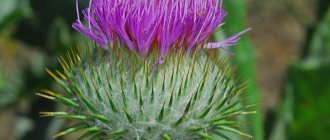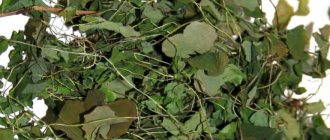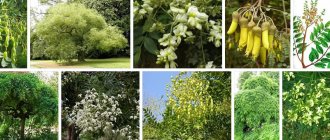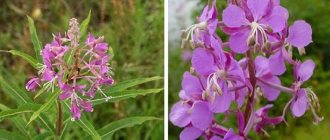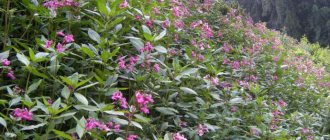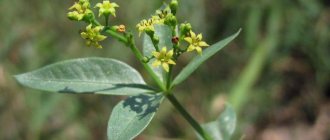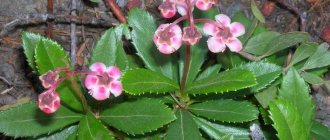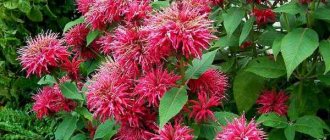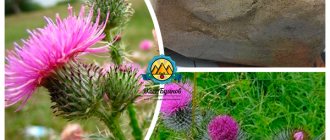Hyssop (Hyssopus officinalis) is a semi-shrub spicy plant from the Lamiaceae family. People call it blue St. John's wort, bee grass. Since ancient times, the medicinal properties and contraindications of the herb hyssop have been known. The first mentions of this plant were found in the treatises of Hippocrates and Dioscorides. Widely used bactericidal and spicy properties in Ancient Egypt and Rome.
Initially, hyssop grass grew in Europe, on the shores of the Mediterranean Sea, North Africa and Asia.
Chemical composition of the herb hyssop
The plant has a rich chemical composition that determines valuable properties:
- yellowish-green essential oil with a distinct camphor aroma contains alcohols, hydrocarbons, aldehydes, camphene, pinene, pinecampheol, while in plants with blue buds there is noticeably more oil, has an antimicrobial effect, and successfully fights viruses;
- flavonoids - diosmin, hesperidin, which have a beneficial effect on the secretion of internal glands and the general condition of the body;
- tannins and bitter substances, resins cause appetite, have a choleretic effect, relieve inflammatory processes in the gastrointestinal tract;
- glycosides have a beneficial effect on the functioning of the cardiac and nervous systems;
- acids – oleanolic and ursolic, normalize metabolic processes and strengthen cell membranes;
- The high content of vitamin C - 0.2% allows the herb to be used as a prophylactic for vitamin deficiency, in winter, during periods of massive viral epidemics.
Comment! Hyssop herb has pronounced phytoncidal and antifungal properties.
Hyssop officinalis
Hyssop (Hyssopus officinalis) is a perennial subshrub belonging to the Lamiaceae family. It has an erect, tetrahedral, branched stem covered with hairs up to half a meter or more in height. On the stem, on short petioles, there are small, elongated, bright green leaves with smooth edges. The root system is quite powerful, well branched, firmly holding the plant in the ground and providing the plant with sufficient nutrient moisture even in dry times.
Hyssop blooms from June to late autumn. Its flowers are small, usually dark blue, but there are also purple and lilac and even pink, lilac or white, depending on the variety. Flowers are located in the axils of the leaves, up to a dozen or more, forming elongated spike-shaped inflorescences. The flowering of this plant is not vigorous, but rather extended. Flowers open gradually throughout almost the entire summer, from bottom to top. Therefore, hyssop retains its decorative effect for a long time. Starting from the beginning of September, instead of flowers, dark brown fruits begin to appear, breaking up into four nuts containing dark seeds.
Hyssop is unpretentious in terms of soil composition, but does not tolerate high soil moisture. Under normal conditions, it can grow in one place for up to 5-10 years. Its stems and leaves are richly saturated with essential oils and therefore the plant itself has a strong, specific aroma. Hyssop is an unpretentious medicinal plant; it can be found in many countries of North America, Europe, the Caucasus, Crimea and Central Asian countries. In Russia it grows in the south of the European part and in the south of Western Siberia. Due to its decorative and spicy properties, it is cultivated as an agricultural crop in some European countries, India, and Central Asia.
A couple of centuries ago, blue St. John's wort had more than fifty varieties, but for some reason most of them disappeared. Now in nature there are no more than one and a half dozen species. One of them, pink hyssop, is considered an herb with magical properties.
The benefits of hyssop for the human body
The herb retains its unique properties both fresh and dried. Consumption in moderate doses helps prevent and cure a number of diseases. The plant has the following beneficial properties:
- When using fresh grass leaves, a pronounced disinfecting effect is observed.
- The herb has a beneficial effect on the walls of blood vessels, strengthening them, normalizing blood composition and reducing the risk of blood clots.
- The plant stimulates the regenerative properties of the body and improves immunity.
- It has an excellent expectorant and bronchodilator effect.
- The plant normalizes the functioning of the gastrointestinal tract and heart, treats disorders of the nervous system.
- Relieves spasms, removes excess fluid from the body, cleanses the kidneys and ureters.
Comment! The herb has been widely used as a spicy seasoning since ancient times.
In Asia, the plant was considered sacred and was used to fumigate shrines.
Useful properties of hyssop:
Its leaves, which have a spicy and tart taste, are traditionally used to prepare alcoholic (liqueurs) and non-alcoholic (fruit compotes) drinks, as well as dishes from fried veal and pork, beans, potatoes and eggs. They are part of a spicy mixture for flavoring sausage products.
This spicy herb is recommended to be added to salads of olives, cucumbers and tomatoes, as well as to marinades and unsweetened curd masses.
Combinations of hyssop with such herbs as fennel, dill, celery, parsley, mint, marjoram and basil are considered especially successful.
Some scholars claim that this herb is mentioned in the Bible, while others say that it is mentioned in the Koran. Probably both are right - in any case, the countries of the Maghreb (those to the west of Egypt) have known and appreciated the aromatic properties of hyssop since ancient times.
But what is known for certain is the inclusion of this plant in the secret list of the Benedictine monks. And this list excites many wise minds, because the recipes for Benedictine and Chartreuse liqueurs are based on it.
Hyssop subshrubs have long spread everywhere where it is warm (in southern Europe, Crimea, the Caucasus and Central Asia), and today they are cultivated in our dachas. The spice has a tart, attractive aroma, and its use improves the taste of not only drinks.
Its smell is quite strong, to the point of pungent. Therefore, they use it in small quantities, 2-3 leaves per pan.
✓ For meat. Tender roasted veal with hyssop acquires a pleasant tartness. Sausages, fried pork, zrazy, chicken liver are also good with this spice.
✓ Cold appetizers. This herb is used in deviled eggs, fresh cucumber and tomato salads.
✓ First courses. Add some chopped hyssop to bean soup.
✓ During conservation. In marinades and brines when canning cucumbers, tomatoes, olives.✓
Spice combinations. Celery, fennel, marjoram, parsley, dill, basil and mint make a good combination with hyssop.
The plant has many beneficial properties.
✓ Strengthens and tones the body.
✓ Stimulates appetite, promotes good digestion.
✓ Relieves inflammation of the urinary tract.
✓ Useful for bronchial diseases, including asthma. Due to its disinfectant and aromatic properties, it is included in toothpastes and elixirs. For fresh breath, you can chew hyssop leaves.
Harm of hyssop
If consumed uncontrolled and excessively, the plant can cause harm to the body. Main symptoms of overdose:
- muscle spasms, colic;
- diarrhea and stomach disorders;
- exacerbation of gastritis with high acidity;
- heart failure, blood pressure drop to critical;
- nausea and vomiting, heartburn;
- convulsions and dizziness;
- allergic rash, urticaria, swelling with individual intolerance.
Attention! If warning signs appear, you should immediately stop taking the herb. If there is no improvement, consult a doctor.
Effect on the body
Data on the use of medicinal hyssop date back to the Middle Ages, when it earned respect as a healing plant and spice, and was grown in monasteries.
Traditional medicine recommends it to strengthen the whole body, which is especially important for older people. Another proven use is the treatment of inflammatory processes in the throat and mouth (recommended in combination with sage).
The plant is rich not only in aromatic, but also in health-improving essential oils, such as pinene, which has disinfectant and hematopoietic effects.
In addition, the natural medicine is rich in flavonoids (diosmin and hesperidin), effective antioxidants that help strengthen the walls of blood vessels. The content of another antioxidant, vitamin C, is also worth considering.
The plant slightly increases blood pressure, so it is added to tea mixtures, which have a decrease in blood pressure as an undesirable side effect.
Article for you:
Celandine: medicinal properties and contraindications, recipes for use in folk medicine
The herb is used for coughs and to relieve asthma attacks, eliminates night sweats, relieves flatulence, has a diuretic effect and prevents the growth of harmful bacteria. The benefit to the body also lies in the prevention of stroke.
At normal dosage, the herb has no side effects, but it should be used with caution as exceeding the dosage may have the exact opposite of what is expected. Hyssop-based products are not recommended for people suffering from increased irritability and nervousness.
Uses of hyssop herb
Modern medicine, like ancient folk recipes, recognizes the excellent healing properties of the herb hyssop. It is recommended for weakened immunity, chronic fatigue syndrome and depression. The plant is an excellent remedy for stimulating memory, treating nervous disorders, and reducing the risk of Alzheimer's disease.
The herb restores the body after a long illness or surgery, heavy blood loss, accompanied by anemia. Hyssop is indicated for women during menopause: it effectively relieves the most unpleasant symptoms of the transition period.
For gastrointestinal disorders such as flatulence, dysbiosis or colitis, the herb gently eliminates the source of the problems and restores function. The plant is prescribed for the prevention of urolithiasis and as a remedy for rheumatism, arthritis, and gout.
The plant can be used both fresh and dried
The use of medicinal hyssop in traditional medicine
Treatment of patients with herbal remedies has reached a new level since it became possible to study their chemical composition. Doctors prescribe hyssop herb, based on accurate scientific data, as a medicinal, restorative and prophylactic agent:
- For bronchitis, pneumonia, any inflammatory processes of the respiratory tract and tuberculosis, the medicinal properties of hyssop have an expectorant, anti-inflammatory and antimicrobial effect.
- In Austria, medicinal hyssop is widely used for asthma in the form of an alcohol solution that alleviates symptoms, relieves spasms that lead to suffocation, and reduces the risk of a recurrent attack.
- With the help of herbal preparations, colds and viral diseases are successfully treated, using them as an antipyretic, decongestant and immunomodulatory agent.
- For inflammation in the oral cavity - sore throat, stomatitis, gumboils, dental problems, rinsing with a decoction of the herb is recommended.
- A napkin soaked in a decoction of the plant can treat wounds, bruises, and inflamed skin lesions.
Medicinal hyssop should be used with caution in children, as the plant contains substances that can disrupt the functioning of the heart muscle. If the pediatrician confirms the need to take syrup or decoction of the plant for cough, then you should strictly adhere to the recommended dosages.
The most common way to use the herb is in infusions and decoctions.
The use of hyssop in folk medicine
For a long time, people have noticed the beneficial effects of herbs on the human body. Since then, folk recipes have expanded and been replenished, providing the possibility of healing. Thus, the medicinal properties of hyssop allow it to be used for coughs of various etiologies, skin problems, from suppuration and bruises to fungal infections.
The most effective recipes from traditional healers:
- Skin diseases. Compresses are needed: 20 g of hyssop herb, 40 g of chamomile flowers, 40 g of horsetail, brewed with 1.5 cups of boiling water. Leave the broth for two hours, strain.
- Tuberculosis. A tincture of 150 g of hyssop herb and 1.5 liters of vodka, infused in a dark place for a week. Take 10 ml before meals for a month.
- Ointment for burns. Boil 200 ml of vegetable oil and 130 g of crushed fresh hyssop in a water bath for eight hours. Strain and store in the refrigerator.
- Cold. It is necessary to prepare a decoction of the following ingredients: 20 g of hyssop herb, 20 g of anise seeds, 20 g of fennel seeds, 60 g of raisins, 60 g of figs and 1 liter of water. Boil the boiled mixture over low heat for half an hour, strain, cool, and mix with 100 ml of honey. Take 10 ml 4-5 times a day. A simple infusion of 200 ml of boiling water and 40 g of the plant also works great. Pour hyssop with water, leave for 20 minutes and drink warm.
We recommend reading: What are the benefits of raisins: properties and contraindications
Herbal infusions work well for bronchial asthma, bronchitis, dry senile cough, tracheitis, and shortness of breath. Since ancient times, plant oil has been used as an effective cosmetic product that softens and significantly revitalizes the skin. Used for rubbing against colds and soothing baths.
Use of hyssop herb in cooking
To use for culinary purposes, the plant must be collected and dried in a ventilated place, shaded from sunlight. You can tie the stems with a broom or chop the leaves, branch tips and flowers to obtain a homogeneous dry mass. The seasoning obtained from the hyssop herb has universal properties, therefore, it is very popular among amateurs and professionals.
The plant is used in the following culinary fields:
- For preparing various meat dishes: minced meat, pates, chops, cutlets, stews, tenderloins.
- Meat stewed with hyssop not only acquires excellent taste and aroma, but is also better absorbed by the body.
- Hyssop perfectly complements cucumber and tomato salads, omelettes and stuffed eggs, and baked vegetables.
- An ordinary bean soup with this spice turns into a gourmet paradise.
- An excellent combination of dried leaves of the plant and unsweetened curd dishes, sandwich mixture of cheese, nuts and salt.
- You can add hyssop to pies, belyashi, dumplings and manti, and make pasta sauce with it.
Hyssop is part of such a popular spice mixture as hops-suneli. On its own, it can be combined with basil and mint, parsley and dill, fennel, and celery.
We recommend reading: Celery: beneficial properties and contraindications
Important! The spice should be stored for no more than 8 months, as the pleasant aroma quickly disappears.
Dried herbs should be used in small quantities for cooking, as its aroma is very strong.
The use of the hyssop plant in cosmetology
Hyssop essential oil and hydrosol are used in the cosmetic industry. Due to its excellent properties, the plant stimulates the regeneration of cells of the outer integument of the body. It has anti-inflammatory, moisturizing and soothing effects on all skin types. The herb is especially effective on fading, problematic, dry and dehydrated dermis. Hyssop is used to resolve scars and stretch marks. The oil has an excellent effect for caring for the skin of the hands, as well as for excessive sweating.
Tea with a sprig of hyssop has amazing healing properties, especially useful for older people
We recommend reading: Mint tea: beneficial properties and contraindications, how to make
Cultivation of hyssop and use in cooking
Hyssop is a very unpretentious plant; it is suitable for almost any climate and soil. It is not afraid of drought or frost, but still prefers to grow under bright sun in an open area in loose, well-drained soil.
It is grown using seeds, which are collected by carefully cutting off the already darkened inflorescences swollen with fruits. They are dried, then the seeds are shaken out of the boxes and used for seedlings or immediately planted in the ground.
Seeds are planted in the ground in April-early May. They are sown in even rows, no more than a centimeter deep. The width between rows is usually twenty to forty centimeters. Seeds germinate in about two weeks.
For seedlings, hyssop seeds are planted in March. They are sown in boxes, and when the first leaves appear, they are planted in separate pots. After about one and a half to two months, the seedlings can be planted in open ground.
Caring for this medicinal plant consists of watering, periodically loosening the rows, timely removal of weeds and light fertilizing.
If you cut the shoots to about 35 centimeters in winter, such a plant will bloom much more abundantly and look bushier and more beautiful.
Hyssop is also propagated by dividing bushes, as well as using cuttings.
The stems and leaves of the plant are used for culinary and medicinal purposes. They are collected immediately after flowering begins. To do this, carefully cut off the tops of the plant with flowers and, tied into bunches, dry them in a well-ventilated place or under a canopy.
Due to its exquisite aroma, medicinal hyssop is widely used in cooking. Dried leaves are added to expensive cheeses and sausages, soups and meat dishes. This spice goes well with legumes and is used to prepare fruit oriental teas and marinades. Pickled cucumbers, olives and tomatoes are amazingly tasty with the addition of hyssop.
Hyssop is famous for its tart sage-ginger aroma and bitter taste. Due to this, it is often used in the production of alcoholic beverages.
Blue St. John's wort goes well with mint, thyme, ginger, basil and garlic. But it is not recommended to get carried away with such a spice, because using it in large quantities will only spoil delicious dishes. In addition, you should know that when adding spices, the container with food must be kept open so as not to spoil the pleasant and exciting aroma.
Few people know that this herb is also good for dietary purposes, since its use in food allows you to avoid the use of salt. It is successfully added to dietary salads and meat dishes, to which it imparts a tart, spicy flavor. This spice also goes well with fish and seafood.
Hyssop during pregnancy
Hyssop helps to successfully conceive a child. But during pregnancy, its use should be stopped. Hyssop herb increases tone, which can lead to miscarriage or premature birth. In addition, it significantly increases blood pressure, which can adversely affect the development of the fetus.
The plant and its oils can be used externally - in the form of lotions, compresses, or rubbed into problem areas. It relieves bags under the eyes, swelling on the legs and face. Improves the condition of skin and hair.
Recipes
Pure hyssop essential oil is actively used for cosmetic purposes, to enrich the composition of antibacterial products for the skin. To obtain a sedative effect, essential oil is added to the bath. Fresh hyssop is widely used for general strengthening of the body - leaves and inflorescences are added to salads, imbuing them with beneficial properties and enhancing the taste. In folk medicine, medications prepared at home are used. In order not to experience the harm of medicinal hyssop, you need to follow the recipes for preparing the drugs.
Juice
Peculiarities. It is used to eliminate withdrawal symptoms, and also as a remedy for excessive sweating.
Preparation and use
- Fresh herbs are carefully crushed together with inflorescences; you can chop them in a blender bowl or pass through a meat grinder.
- The resulting pulp is wrapped in gauze, folded several times.
- Squeeze the juice by hand into a clean container.
- Take 40 drops orally in a glass of water for a hangover.
- For sweating, hyssop juice is used after dilution with clean water 1:1. The resulting substance is used to wipe particularly sweaty areas several times a day.
Tea
Peculiarities. Taken orally as a tonic, tonic, anti-cold and expectorant.
Preparation and use
- Two teaspoons of chopped herbs are poured into a metal container.
- Pour one glass of clean cold water.
- Place the container on low heat and bring the mixture to a boil.
- Immediately after boiling, the container must be removed from the heat and left to steep for five minutes.
- Strain and take up to two cups per day.
Infusion
Peculiarities. Used to improve digestion, as a mild diuretic, and also to stabilize cardiac activity.
Preparation and use
- Inflorescences without leaves (10 g) are poured with half a glass of boiling water.
- Leave the mixture to infuse for half an hour.
- Strain, take the entire volume twice a day.
Decoction
Peculiarities. It is used as an external remedy in the treatment of wounds, skin injuries, inflammation, dermatitis, and joint pain.
Preparation and use
- Three teaspoons of hyssop are poured into 300 ml of boiling water.
- The mixture is placed in a water bath and boiled slowly for half an hour.
- After 15 minutes of infusion, the mixture is filtered.
- Wash the affected area or apply compresses from the decoction at least twice a day.
Reviews of medicinal hyssop from traditional healers indicate the plant’s great effectiveness in treating inflammation of any location, as well as its ability to eliminate the process of decay in internal and external abscesses.
Hyssop essential oil
Hyssop essential oil is very popular. It perfectly calms frayed nerves, relieves spasms, and fights allergies. Women often use it to normalize the menstrual cycle. The oil perfectly relieves weather dependence and helps reduce warts and calluses.
The uses for essential oils are also varied. For aromatic baths, just add 10 drops of oil to warm water and 10 minutes of bliss and healing are guaranteed. You should not abuse your stay in such a bath; since hyssop, although it is a medicinal plant and has quite useful properties, is still a mildly poisonous plant, and in certain cases is contraindicated for use.
For inhalation, inhale water steam with the addition of 5 drops of essential oil for 5-7 minutes. Acne, bruises and bruises, warts, eczema, and wounds are often lubricated with essential oil.
For colds and joint pain, a massage using essential oil will come in handy. To do this, 10 drops of ether are mixed with 20 ml of any vegetable oil and rubbed into the body. After applying the oil to the body, there is usually a slight tingling or redness of the skin. There is no need to worry about this; this is a natural property of the plant.
What is hyssop
Hyssop officinalis is a spicy vegetable crop in the form of a subshrub about 70 cm high. Small green leaves are located on the pubescent stem.
It blooms from the 2nd half of July until frost - the shrub remains decorative throughout the season. The flowers are white, pink, purple or blue, located in spike-shaped inflorescences.
At the end of flowering, brown fruits-nuts with seeds are formed that remain viable for up to 36 months. A powerful, highly branched root system makes it possible to live in arid places.
The culture has been known for many years. Mentioned in the Bible, it is a line of the Penitential Canon: “Sprinkle me with hyssop, and I will be clean, wash me, and I will be whiter than snow.” The phrase can be translated as “Sprinkle me with hyssop, and I will be clean; wash me, and I will become whiter than snow.”
Infusions and spice juice were used to combat skin diseases, leprosy, and plague.
View this post on Instagram
Posted by Elena Danilova (@danilovasoul) Jan 29, 2021 at 2:16 PST
Hyssop is classified as a medicinal plant due to the presence of such beneficial substances as:
- isopinocamphone;
- carvacrol;
- hesperedin;
- diosmin;
- ascorbic acid;
- ursolic acid.
They improve blood flow, reduce blood sugar, and have an antimicrobial effect.
Externally, medicinal hyssop is similar to lavender. Differences between cultures:
| Sign | Lavender | Hyssop |
| Frost resistance | Low | High |
| Height | Up to 100 cm | Up to 70 cm |
| Honey plant | Yes | Relatively |
Types and varieties
Currently, there are 15 types of culture, the most popular and cultivated are:
- anisic;
- chalky;
- drug;
- honey plant
Anise hyssop has soft lavender flowers. The greens, crushed between your fingers, have a complex balsamic, slightly fruity smell with hints of mint, camphor, and anise. Attracts the attention of bees, but at the same time repels flies and mosquitoes.
Cretaceous hyssop is the most beautiful. Grows in soils with a high chalk content. A perennial plant up to 50 cm high, with many pubescent stems forming a fluffy bush. Blooms from June to early September. The culture is listed in the Red Book.
Many varieties have been bred, differing in flower coloring, height and width of the bush, and flowering duration:
- On sale is a variety of medicinal hyssop “Accord” with a classic aroma and delicate pink flowers. Mid-season, frost-resistant, easily tolerates drought. Can be used for medicinal purposes or as a seasoning.
- The variety “Pink Mist” can be purchased in seed stores or online. Attracts attention with unusual pink flowers, high resistance to drought, cold, and disease.
- The pink-colored variety “Amethyst” is good for growing. Its dense, pubescent bushes will decorate any flower garden from June to the end of September.
- Breeders have obtained plants with white flowers. For example, the variety of medicinal hyssop “Rime”. It is characterized by high productivity, an abundance of lush shoots up to 70 cm in height, and rapid growth.
- Most varieties of medicinal hyssop have blue flowers. They were obtained from wild forms of the plant. The most common are “Otradny Semko”, “Lekar”
British breeders managed to develop tricolor hyssop with simultaneous flowering of pink, blue and white flowers.
To view a review of the plant:
Hydrolate
This is a product produced by steam distillation. To prepare it you will need:
- 1 part chemically untreated plant;
- 1 part distilled or filtered water;
- lots of ice;
- large dishes with a lid;
- heat-resistant ceramic bowl;
- utensils for the final product.
If the greens are fresh, then you need to wash them and carefully check to see if there is any bug hidden in them.
Place an empty ceramic (heatproof) bowl in the middle of a large saucepan. Pour the plant into the bottom of the pan and fill it with filtered water (ratio 1:1).
Place on the fire and cook slowly. Close the pan with a lid - the back side - the condensed flower water will flow into a bowl located in the middle of the pan.
Place ice on top of the inverted lid - preferably in ziplock bags to prevent it from spreading. Replace it as it melts.
Depending on the amount of water used, the entire process takes 1-2 hours. Pour the resulting hydrosol into a clean bottle and store in the cold.
The beneficial properties of hydrolate are due to the preservation of most important substances. Hyssop contains 0.3-1% essential oils, the main components of which are limonene, sabinin, pinocamphone, isopinocamphon and pinene. The greens contain the flavone glycoside hesperidin, tannins, magnesium, organic acids, minerals and some resin.
It is recommended to take hydrolate 1-2 tsp. daily on an empty stomach (in the morning) for a month. Hydrolate is used in medicine as compresses against eczema, bruises and non-healing wounds. It also soothes itchy scalp and eliminates annoying dandruff.
Article for you:
Fenugreek - beneficial properties and contraindications
Preparation of hyssop
Herbalists advise collecting hyssop during full flowering, at sunrise, in the first phase of the moon - then it has full healing power and will bring maximum benefits.
- Before you cut the grass, be sure to say hello to the grass and ask permission to collect it. For medicinal purposes, cut off the flowering tops;
- To properly dry the grass, collect it in small bunches and hang it in a ventilated place, but away from the sun;
- It is better to store hyssop in a hermetically sealed container.
In our country, the plant has long been grown in industrial conditions, but this is done mainly to extract the most valuable essential oil from it.
A light, pure herb, hyssop, which has wonderful healing properties and a minimum of contraindications, regulates the energy of a person as a whole and has a powerful healing effect.
There are many valuable plants that naturally have excellent medicinal qualities. Hyssop also belongs to the category of similar herbs, the usefulness of which was known to people in ancient times. In order to get a correct idea about this plant, it is worth looking at the photo of hyssop for its beneficial properties and contraindications. This herb has long been used to help during colds.
Traditional medicine recipes based on hyssop
1. Bronchial asthma and suffocation can be prevented with the help of an infusion; for this you need to take 4 tablespoons of the herb, grind it thoroughly, pour it into a thermos, add 1 liter of water, leave for 1 hour. Then strain. Should be taken hot, 30 minutes before meals, 1 tbsp. The course of treatment is 1 month.
2. For diseases of the gastrointestinal tract, hyperhidrosis, you can drink this decoction, this will require a teaspoon of small flowers, leave for 2 hours, take 3 times a day. It is good to wash your eyes with this decoction if they are affected by conjunctivitis.
3. You can cure tinnitus and shortness of breath with the help of powdered leaves, be sure to add honey. You need to take the infusion 1 tsp. 3 times a day, wash down with water.
4. If a person is often bothered by respiratory diseases, you can use this recipe - take 2 teaspoons of dry leaves, pour 1 glass of boiling water, leave for 20 minutes. Take half a glass twice a day. In cases of bronchitis, you need to take a teaspoon of hyssop, add mother and stepmother, pour 200 ml of boiling water, leave for 15 minutes. Drink 2 times a day.
5. You can fight a cold with the following recipe: mix hyssop with mint, pour 200 ml of boiling water, leave, take 1 glass 2 times a day.
6. A collection of sage and hyssop will help get rid of laryngitis and pharyngitis; for this you need to mix everything thoroughly, pour a glass of boiling water, leave and drink. Take twice daily for one week.
7. A recipe based on hyssop and white wine will help you get rid of flatulence and colitis; leave for one month, shake and take.
8. In cases of loss of appetite, you need to take a decoction of hyssop herb, it will require two tablespoons of chopped herb, leave for one hour, strain.
9. For gingivitis and stomatitis, you need to rinse your mouth with an infusion of hyssop, it will require 120 ml of alcohol, 20 grams of herbs, leave for one week, strain. Take a teaspoon of tincture, dilute it in water, rinse your mouth with it.
Contraindications to the use of hyssop
Before using a medicinal plant, it should be noted that hyssop has a number of contraindications:
- It is not recommended to take hyssop for people with high acidity;
- Long-term use of the infusion for hypotension, nephritis and nephrosis contributes to the appearance of side effects;
- A decoction of hyssop helps reduce and stop lactation, so it is strictly prohibited for pregnant and lactating women to take it;
- The essential oils contained in the plant have a negative effect on the body of people suffering from epilepsy and neuropathy;
- The use of hyssop in the form of a tincture should be discontinued in case of diarrhea and stomach upsets;
- Children and adolescents should take the infusion with caution, as the oils contained in the plant have a potent effect;
- Children under 2 years old are strictly prohibited from taking hyssop.
